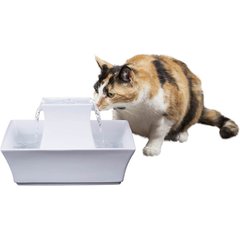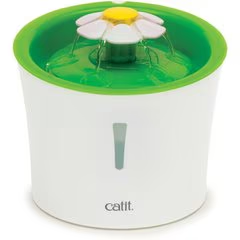Whisker Fatigue in Cats: What It Is and How To Help
chendongshan/iStock / Getty Images Plus via Getty Images
If you notice your cat is suddenly making messes with their cat food, pulling food out of their bowl to eat on the floor, or is more finicky about their food, some whisker fatigue could be to blame.
The whiskers on your cat’s face are sensitive feeling organs that felines use to gather information about their environment. Cat whiskers collect and send information to the brain, like sensitive little antennas that cats use to navigate in the dark.
Because a cat’s whiskers are constantly transmitting information, there’s a theory that this can lead to whisker fatigue.
What Is Whisker Fatigue?
Think of whisker fatigue as an information overload that stresses out your cat. Cat whiskers are so sensitive that they can determine subtle changes in movement and pressure. Whiskers function to help cats find food, relate spatially to their environment, and avoid potential dangers by detecting movement from potential predators.
Because cat whiskers are so sensitive, every time your kitty comes into contact with an object or detects even small movements (such as a change in air current), messages are transmitted from those sensory organs at the base of their whiskers to their brain.
That barrage of messages could stress out your cat and eventually cause whisker fatigue or whisker stress, says Dr. Neil Marrinan, DVM, of Old Lyme Veterinary Hospital in Connecticut.
However, whisker fatigue is a new and controversial topic. Not all veterinarians believe whisker fatigue in cats is a valid concern, and there have almost no studies to determine the validity of the claim that whisker fatigue exists.
One 2020 study compared cats fed out of whisker-friendly bowls and regular food bowls. It found that there was no difference in eating time, amount of food eaten, or food dropping between the two groups. However, the study noted that some cats did prefer the whisker-friendly bowls.
As such, it’s important to account for possible whisker fatigue when observing your kitty’s eating habits.
What Causes Whisker Fatigue in Cats?
Whisker fatigue is not caused by an illness and it’s not a disease.
It’s thought that contact with everyday items can lead to whisker fatigue, particularly food and water bowls. The idea is that when your cat’s whiskers brush against the sides of their bowls while they eat or drink, this can overwhelm their sensitive receptors and theoretically lead to stress.
Signs That Your Cat Has Whisker Fatigue
Your cat’s behavior at their food and water bowl will tip you off that they’re stressed, Marrinan says. Watch out for symptoms of whisker fatigue, including if your cat is:
-
Pacing in front of a food or water bowl
-
Acting hungry, but doesn’t want to eat from a bowl
-
Pawing food out of a bowl and eating it on the floor
-
Acting aggressively toward other household pets when eating
However, issues with eating can also be signs of other health problems. Always rule these out by taking your cat to the vet if you notice any of the above behaviors. Something more nefarious than whisker fatigue may be to blame, such as dental disease, oral tumors, kidney disease, or gastrointestinal diseases.
Some pet parents believe another solution is to trim their cat’s whiskers, but do not do this. “Trimming whiskers mutes their expression, dims their perceptions, and in general, discombobulates cats and annoys them,” Marrinan says. “I do not recommend trimming cat whiskers.”
What If the Problem Isn’t Whisker Fatigue?
In addition to whisker fatigue, there are many reasons that can cause a cat to develop a finicky appetite or other eating problems.
-
Cats that have painful dental disease can exhibit the same symptoms as whisker fatigue.
-
Cats that have liver disease, kidney disease, or inflammatory bowel disease can also develop eating problems.
-
Cats can bully each other around the food bowl, which can cause a cat to develop abnormal eating behavior.
-
Other sources of stress, such as a recent move, a new addition to the household, and loud noises around the food bowl, can contribute to loss of appetite.
-
Anything that can make a cat feel nauseous can also cause a cat to stop eating.
If you change your cat’s bowls and still notice they’re exhibiting abnormal eating behavior, schedule a checkup with your veterinarian.
Remember that cats are masters at hiding their pain and discomfort—a cat has to be suffering significantly before they will let it show. Seek prompt veterinary attention if you notice your cat’s eating behavior changing significantly or if your cat is losing weight.


